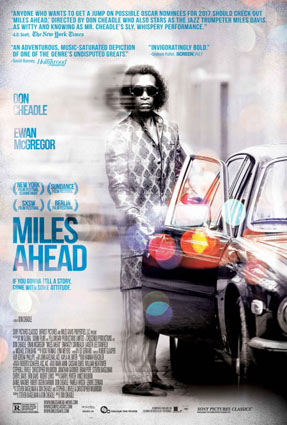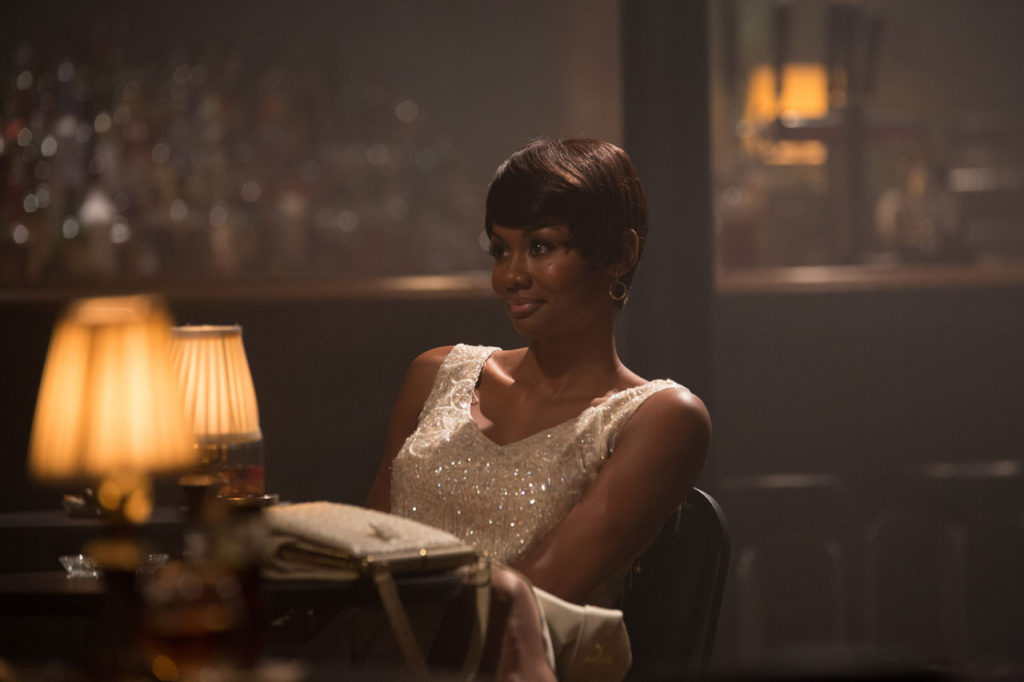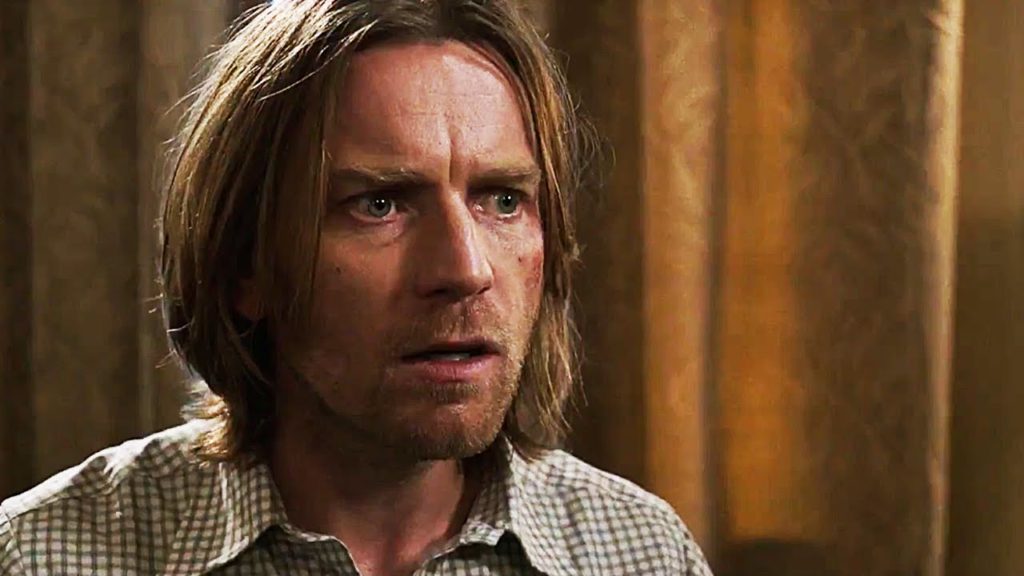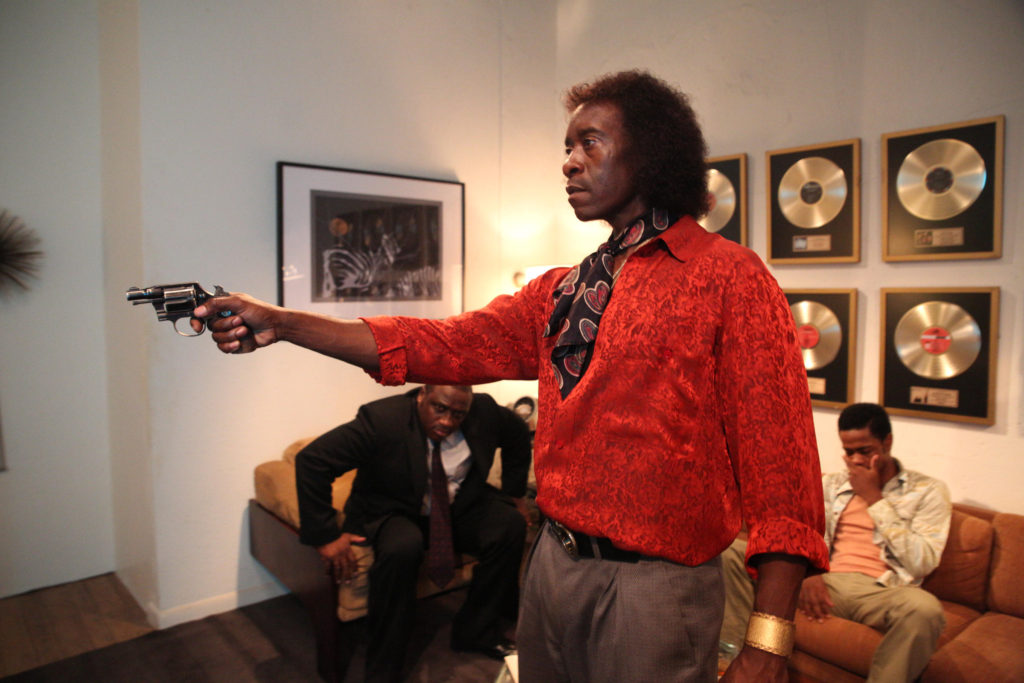Don Cheadle Plays Jazz With Miles Davis’ “Social Music”
DIRECTOR: DON CHEADLE/2016
Miles Davis was no doubt a jazz legend whose influence continues to cast a large shadow over the music industry.  He is also a great subject for a biopic as his life seems to be the blueprint for the typical “Behind the Music” (1) script when covering any musical artist’s life and artistic contributions. First you must be a genius who is discovered against the odds. Usually the first part of one’s professional life is met with great success and critical acclaim, only to have personal demons drag the artist down from the great heights from which they had ascended to. Following a tragic fall from grace, there must be, of course, a heartfelt redemption.
He is also a great subject for a biopic as his life seems to be the blueprint for the typical “Behind the Music” (1) script when covering any musical artist’s life and artistic contributions. First you must be a genius who is discovered against the odds. Usually the first part of one’s professional life is met with great success and critical acclaim, only to have personal demons drag the artist down from the great heights from which they had ascended to. Following a tragic fall from grace, there must be, of course, a heartfelt redemption.
While Miles’ life certainly follows this script, Miles Ahead is anything but a conventional take on the life of Miles Davis.
Don Cheadle worked for over six years to bring this tale to the screen. Don co-wrote the screenplay with Steven Baigelman, and also directs, stars, produces, and performs in the film and on the soundtrack. Cheadle actually learned to play the trumpet just for this film. It is a labor of love, and that respect and admiration is all over the screen, daring you to enter the world of a truly gifted musician.
 Miles Ahead takes place primarily within a few days of the mid-1970’s at a time when Miles was strung out on cocaine and whatever woman he was hooking up with. During his self-imposed isolation, Davis became somewhat of a hermit who was unable to really play any more, but was rumored to have been recording some new music in an attempt to stage a comeback. The music label was salivating for anything new to help them fulfill Miles’ recording contract and bring in some much needed cash. Miles Davis had no use for them, or for granting a story to overly eager Rolling Stone writer Dave Brill (Ewan McGregor) who is willing to put it all on the line to get this story.
Miles Ahead takes place primarily within a few days of the mid-1970’s at a time when Miles was strung out on cocaine and whatever woman he was hooking up with. During his self-imposed isolation, Davis became somewhat of a hermit who was unable to really play any more, but was rumored to have been recording some new music in an attempt to stage a comeback. The music label was salivating for anything new to help them fulfill Miles’ recording contract and bring in some much needed cash. Miles Davis had no use for them, or for granting a story to overly eager Rolling Stone writer Dave Brill (Ewan McGregor) who is willing to put it all on the line to get this story.
While there are the requisite flashbacks to get a sense of Miles Davis during his classic period that included such recordings as Sketches of Spain and Kind of Blue, mostly Cheadle plays jazz with the story, creating a weird, and yet fun sort of heist film within this biopic, where a drugged out Davis, along with a drugged out Brill try to get back a stolen reel of music that the label has stolen from Davis at a party that one of Davis’ paramours is throwing at his house. The label wants anything they can produce to satisfy Davis’ contract and wring whatever money is left in his horn, while Davis sees that reel as the only lifeline left to the person he used to be, and could be again.
 While it becomes a heist film, this is not to say that this film ever gets wacky. It stays very grounded in the time period of the mid 1970’s, and Cheadle’s take on Davis is very gritty, never glossing over Miles Davis’ personal demons of substance abuse, or his tendency to engage in domestic violence, especially against his first wife Frances Taylor (Emayatzy Corinealdi). It just lacks the straight forward linear approach of another biopic that is currently in theaters that covers the life of trumpeter legend, Chet Baker, called Born to Be Blue. This unconventional approach Cheadle has woven works for this film in ways that it wouldn’t have for Born to Be Blue, or even the recent Hank Williams biopic, I Saw the Light. The heist aspects of this film, while a departure to what you expect going in, feel organic to the way Cheadle introduces us to Miles Davis, his character, and it provides us a means to feel his inner torment without just reveling in his misery.
While it becomes a heist film, this is not to say that this film ever gets wacky. It stays very grounded in the time period of the mid 1970’s, and Cheadle’s take on Davis is very gritty, never glossing over Miles Davis’ personal demons of substance abuse, or his tendency to engage in domestic violence, especially against his first wife Frances Taylor (Emayatzy Corinealdi). It just lacks the straight forward linear approach of another biopic that is currently in theaters that covers the life of trumpeter legend, Chet Baker, called Born to Be Blue. This unconventional approach Cheadle has woven works for this film in ways that it wouldn’t have for Born to Be Blue, or even the recent Hank Williams biopic, I Saw the Light. The heist aspects of this film, while a departure to what you expect going in, feel organic to the way Cheadle introduces us to Miles Davis, his character, and it provides us a means to feel his inner torment without just reveling in his misery.
While much of the film is centered on the person of Miles Davis and his struggle to find his own redemption, what is never out of focus is the musical legacy that existed in Davis’ classical period before his fall from grace and his eventual return to form in the latter part of his life.
The few flashback scenes of his life prior to the mid 1970’s show us the genius jazz musician who actually bristled at that musical description of being “jazz”. Davis had a strong understanding of classical music in all of its forms, experimenting with Spanish-styled themes, baroque, bossa novas, and even opera, with his album Porgy and Bess, based on the opera by George Gershwin. He was also very influenced by funk, and even electrified his sound before his nearly 6 year retreat into his New York City home. His style and ,tastes, and especially his playing, transcended the restrictive label of “jazz”.
 The film ends with a look to Davis’ future by showcasing a nite of music that fit Davis’ preferred term for the sounds he made, namely “Social Music”. Jazz had stopped being a daring art form of improvisation that one thought of when considering Davis throwing down live with John Coltrane, and had instead become more associated with the corny and often lauded “smooth” jazz sounds that made its way into elevator music or “Muzak”. “Social Music” as a moniker gave Miles the freedom and ability to criss-cross his way across the American songbook, classical, jazz, blues, funk, and the like and not be pigeonholed into any rigid preconceptions or genres.
The film ends with a look to Davis’ future by showcasing a nite of music that fit Davis’ preferred term for the sounds he made, namely “Social Music”. Jazz had stopped being a daring art form of improvisation that one thought of when considering Davis throwing down live with John Coltrane, and had instead become more associated with the corny and often lauded “smooth” jazz sounds that made its way into elevator music or “Muzak”. “Social Music” as a moniker gave Miles the freedom and ability to criss-cross his way across the American songbook, classical, jazz, blues, funk, and the like and not be pigeonholed into any rigid preconceptions or genres.
Cheadle does a good job of structuring this film’s narrative in a way that compliments Davis’ personality and musical style, but spends a bit too much time on the domestic ups and downs of Davis’ 10 year marriage to Taylor. While so much hinges on this relationship, it would have been nice to see have seen a bit more of Davis’ early period to better empathize with his struggle during the main events of this story. We don’t really get a true sense of how far he has fallen outside a couple of short flashbacks. This creates a bit of a lull in a story that otherwise moves at a decent pace once Davis and Dave Brill are planning and executing their heist. We get a real sense of Cheadle’s passion for this project, but something still feels incomplete.
So much of Davis’ personal struggles were towards freedom. Freedom from drugs, violence, meaningless sex, recording contracts, social awkwardness, and anxiety. His music longed for the same freedom that he didn’t seem to be able to find for himself internally. And that struggle for freedom came out through his music, note by note, phrase by phrase, challenging the structure and barriers put upon it. The final moments of Miles Ahead focus on Miles’ re-ascention that is best incapsulated in nothing more than a simple performance with fantastic musicians backing Cheadle’s version of Miles Davis as he launches himself into the musical stratosphere. Before the credits roll, we simply see a picture of Miles Davis as text appears, coyly listing a birthdate next to Davis’ picture, but with no date of his death as the screen fades to black, signifying that his musical legacy lives on.

